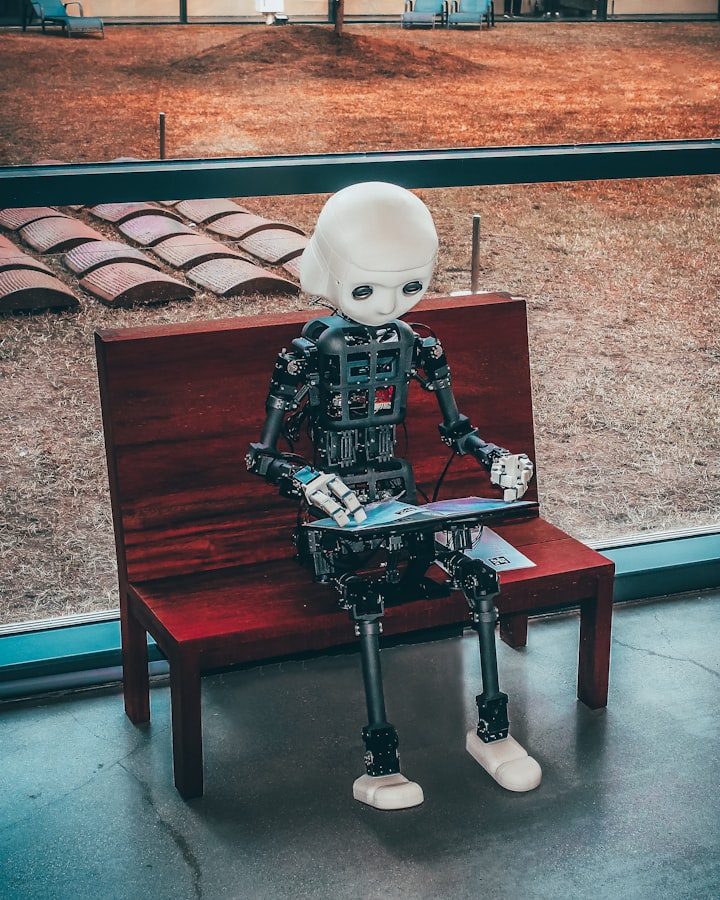Uncovering the Origins of ChatGPT: The Rise of a Language Modeling Legend
Tracing the evolution of natural language processing and machine learning with ChatGPT
INTRODUCTION
In this article, we will explore the origin of ChatGPT, understand how it works, look at its major milestones over the years, and learn more about the people behind this remarkable AI technology. Let’s get started!
Exploring the Evolution of ChatGPT: Understanding the Impact of Language Modeling on Discriminative Language Understanding:
This article summarizes the development of language modeling tools ChatGPT and GPT-3, and their impact on the field of language processing. ChatGPT has been successfully trained on large amounts of text data, but there are concerns that it may be susceptible to bias due to its reliance on large language models.
- To uncover the origins of ChatGPT and its language modeling tasks, it is important to understand how language modeling objectives can be used for discriminative language understanding tasks.
Unlocking the Power of ChatGPT: How Supervised Language Modeling is Revolutionizing NLP Applications
By modeling language modeling use and training ChatGPT in a supervised manner, basic intuition can be used to build a fundamental understanding of the intuition behind GPT and its ability to generate coherent text. ChatGPT is a powerful tool that is being used within GPT-3 to solve a variety of problems.
From conversational agents to natural language processing applications, ChatGPT has been able to demonstrate significant performance improvements over traditional language models. This has allowed it to solve complex problems such as automated question answering, text summarization and more.
ChatGPT has also been able to provide insights into how the model can be improved by providing better generalization capabilities.
The Evolution of ChatGPT: Navigating the Challenges of Large Language Models and Self-Supervised Learning
It has been able to solve many tasks with its training of a larger model, while also solving downstream tasks with the adaptation of a larger model. Researchers have also pioneered models such as ChatGPT that have helped to increase the use of self-supervised learning in many cases.
The most useful takeaways from this article are that it is possible for a generic LM to be used for a wide range of tasks, and that ChatGPT pioneered the use of self-supervised learning on unlabeled data for language modeling.
Other AI-generated sources, such as models like GPT, have been trained to tend large language models. However, these language models can degrade when the training data is limited or not of high quality. To turn large language models into more powerful tools, adding more training data is essential.
Additionally, by ingesting more data from the internet and through other challenges, AI can learn new abilities and gain the ability to perform tasks it had not been able to do before. However, with this increase in power comes a greater risk of exhibiting biases around race and other issues.
Advancing Language Modeling with ChatGPT: The Challenges and Opportunities of Multilingual Natural Language Processing
Models like GPT are being used in different languages with some success but there still remain many problems that need to be addressed before they can be considered reliable sources of information. Nonetheless, ChatGPT has set a precedent for using self-supervised learning on unlabeled data for language modeling and has opened up a world of possibilities for mounting larger and more powerful language models.
By using machine learning, it is possible to make large language models that can learn natural language processing (NLP) tasks like text generation with ease.
These models generate text by using the full computing power of powerful computers and even cloud computing. In 2018, OpenAI introduced GPT-2, a huge language model trained on a dataset of 8 million web pages.
Google also released its own large-scale NLP model called BERT (Bidirectional Encoder Representations from Transformers) in the same year. With tools like ChatGPT and BERT, it has become easier to use NLP algorithms and tasks that are normally difficult to do with traditional methods.
The Rise of ChatGPT: A Language Modeling Legend that Transforms Writing with Ease and Accuracy
Learning machines are gaining more and more attention as they are able to improve grammar and help people understand the nuances of the English language. However, this technology can also be used to put too much trust in automated language tools, such as Grammarly or Google Translate.
As a result, people may not realize that they are putting too much trust in a machine when it comes to writing and modifying ideas. ChatGPT is a language modeling legend because of its capabilities of making such improvements without any human intervention.
With ChatGPT, users can quickly transform their text in order to make it more accurate and better written without having to use any additional tools. This means that even those with a poor grasp of English can still produce quality writing with just a few clicks. Furthermore, ChatGPT is able to take into account the nuances of the English language and make improvements accordingly instead of making mistakes that other automated tools may make worse their text.
Exploring the Advancements of Language Modeling with ChatGPT: From Basic Operations to Business Applications
The rise of massive pretrained language models, such as ChatGPT, has allowed for an even more advanced grammarly capabilities. The three newer entrants have identified startups that have focused on generation language AI as their killer app - providing solutions for a variety of industries.
With this type of technology, businesses can now identify specific NLP models that can be applied to various tasks and problems within their organization.
CONCLUSION:
The article “Uncovering the Origins of Chatgpt: The Rise Of A Language Modeling Legend” examines how multiple inputs were used to create the chatgpt model and how it was focused on answering basic operations questions.
It also looks at how large language models can be used to teach business schools and required an understanding of the model before case studies could be conducted and show their findings.
Business schools now use this technology to teach students about clinical decision making and medical education, which require more complex questions than what chatgpt originally tackled.
About the Creator
Mohammed Sheik Mohideen
Meet Mohammed sheik, a tech-savvy student and passionate article writer.
Keeps readers informed on latest tech trends and news with concise, insightful writing.
Follow my articles for a fresh perspective on the industry.






Comments
There are no comments for this story
Be the first to respond and start the conversation.